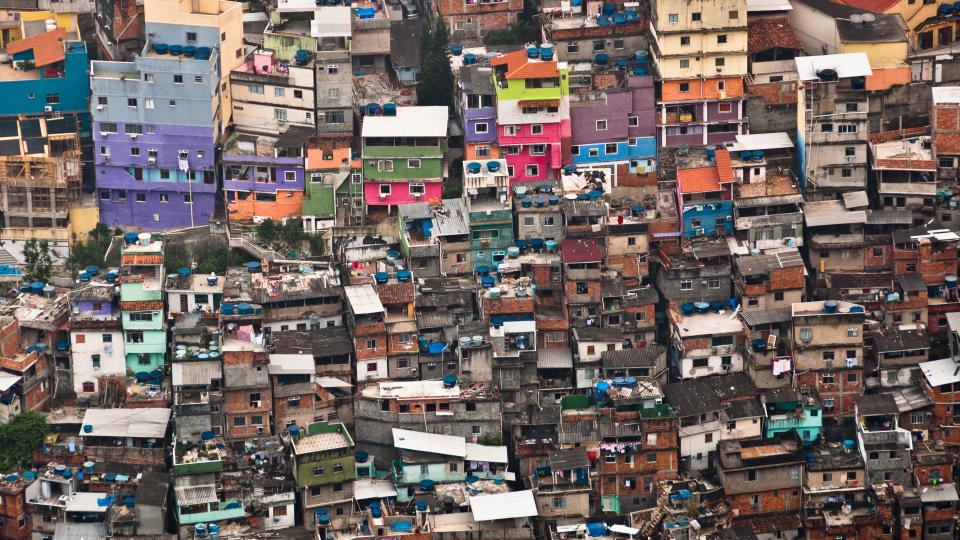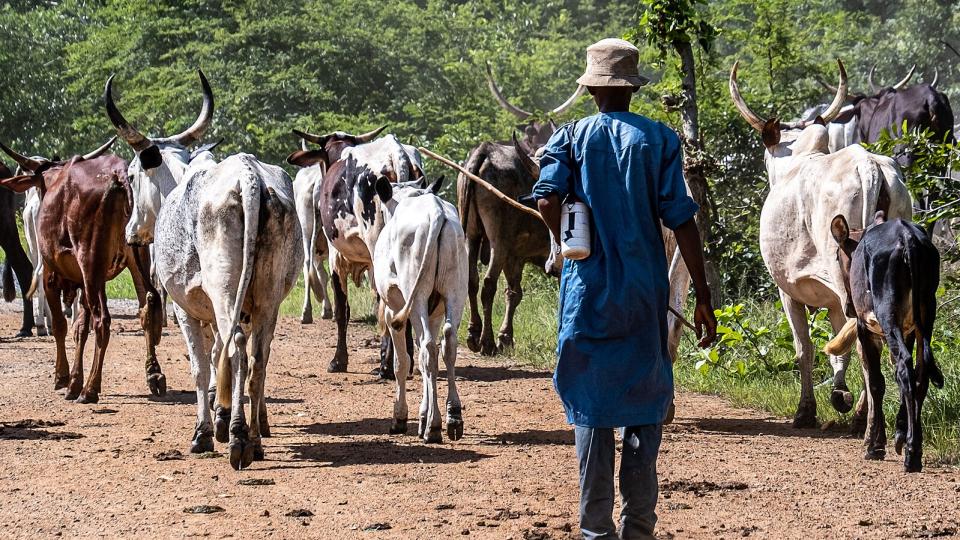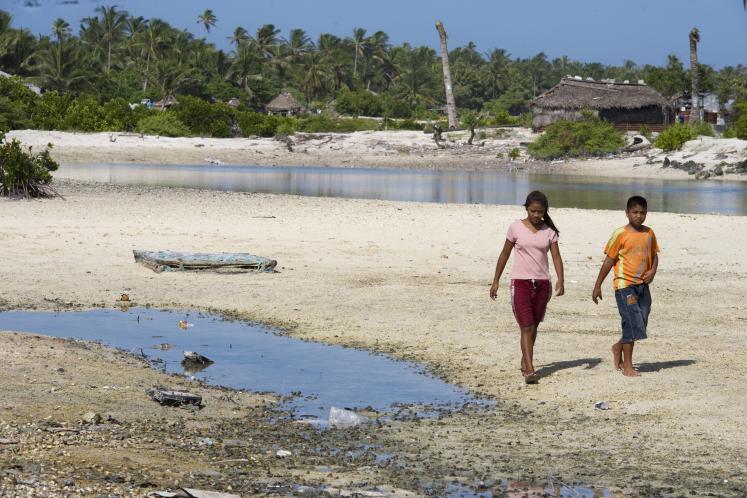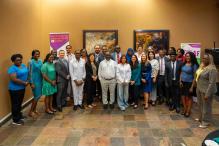Fortifying houses, elevating homes, reclaiming land from rising seas, all in the effort to save Tuvalu, and above all, to stay on this Pacific Island State. This is what many Tuvaluans – activists, government officials, and citizens – prioritize despite climate risk media and donor narratives which suggest people have no option but to move to safer ground.
The relationship between climate change and human mobility cannot be reduced to a scenario of displacement and mass migration flows. The reality of climate immobility/mobility in Tuvalu and across the Global South is plural, and, above all, political, characterized by a drive to determine one’s climate im/mobility future, while at the same time often facing obstructions to do so.
Despite the plurality of ways in which the climate-mobility nexus manifests itself, the subject remains haunted by a stereotypical understanding of the climate migrant; often assumed to be a migrant that originates in the Global South and aims to move to the Global North.
It’s critical to understand that many communities do not appreciate being framed as ‘climate refugees.’ There has been a wave of resistance against externally-imposed narratives of displacement and relocation.
Our research – presented in a chapter within the new Palgrave Handbook of South-South Migration – provides a more nuanced understanding of climate mobility. It discusses several studies that have exposed pre-assumptions held about the figure of the climate migrant, and highlights several examples to offer a more political and historical understanding of the ways in which the nexus between mobility and climate change unfolds in several regions across the Global South.
Resisting Climate Refugee Narratives
It’s critical to understand that many communities do not appreciate being framed as ‘climate refugees.’ There has been a wave of resistance against externally-imposed narratives of displacement and relocation.
We see this resistance in the Pacific Islands, Bangladesh, the drylands of Kenya, and in the mountainous areas of Patagonia. Our work with communities in all these places has demonstrated that it is communities themselves – and not external experts or donors – who should define their adaptation pathways. Activists and academics have become increasingly vocal in their critique of a climate mobility debate that is largely determined by a coalition of scientists (often from the Global North), media, development banks, and humanitarian agencies, but not affected populations.
As argued by Kitara, an activist from Tuvalu: “We all know that Pacific Islanders are fighting against climate change as a direct threat to our land and our ocean. But how many of us realize that climate change means we must also fight for our political independence and our identity? This is our sovereignty; we cannot let it be taken away from us, even if our land is highly at risk.”
To return to the earlier example of the Pacific Island States, evidence suggests that donors are often reluctant to invest in adaptation in place, depicting the Islands as inherently lost to the sea and thus unsavable. But this narrative overlooks the devastating impact that relocation would have on a community’s identity and culture, and seriously undermines State sovereignty to determine a different course.
As argued by Kitara, an activist from Tuvalu: “We all know that Pacific Islanders are fighting against climate change as a direct threat to our land and our ocean. But how many of us realize that climate change means we must also fight for our political independence and our identity? This is our sovereignty; we cannot let it be taken away from us, even if our land is highly at risk.”
The climate refugee storylines often embody a problematic narrative of climate-vulnerable populations in the Global South as mere victims subject to displacement; a narrative that may result in reductive and non-inclusive climate adaption decision-making.
Cross-Border Climate Mobilities in the Global South
Another important topic concerns borders. The majority of climate mobility research suggests that most movement will take place on relatively local scales; for instance, a family moving from an affected rural site to a nearby city. By doing so, this family, and countless others, have debunked the still often-heard suggestion that climate migration mostly involves movements from the Global South to the Global North.

This does not mean, however, that we should lose sight of borders. A country focus and Western-centric concepts of the nation state may limit our understanding of climate mobility, and it’s important to acknowledge that local human mobilities do not always stop at the border. Or, if they do because of border controls, they are still influenced by broader dynamics and social relations that take place in the context of border politics. This remains important to understand, even if these dynamics are not cross-continental but largely regional.
Take the Fulani pastoralists in West Africa; a historically nomadic group that is increasingly affected by the impacts of climate variability in West Africa. The Fulani people constitute one of the most mobile groups in West Africa, moving southward to coastal countries with the onset of the dry season, then back northward during the rainy season. We can only understand and appreciate their mobile adaptive strategies by looking beyond borders.

At the same time, as we detail in our chapter in the Palgrave Handbook on South-South Migration, governments have become increasingly restrictive towards the movements of the Fulani pastoralists, with policies that either ban or restrict their mobility to a fixed space and time. Under these conditions, some pastoralists are forced to abandon their mobile and adaptive lifestyles all together.
This example demonstrates how climate-mobility is shaped not just by socioeconomic differences, but also by political discourses on race, norms about desirable and undesirable mobility, and related policy regulations that limit mobile lifestyles to fit a sedentary and bordered understanding of social-environmental life.
Four Lessons to Improve Climate-mobility Research and Policy
We put forward four lessons central to our research on climate-mobility relations:
First, im/mobilities are embedded within existing, often highly uneven, societal patterns which shape how people respond to and are able to adapt to climate risks. This means that researching how climate change affects capacities and aspirations to move or stay needs to be done in relation to questions of socioeconomic inequality, gender, race, and other factors.
Second, the climate change-mobility nexus is political. The policy agenda is largely determined by powerful players, such as the United Nations, the World Bank, the media, and climate scientists. It is important to seek resonance with the views and lived experiences of affected communities, to account for Indigenous perspectives, and for these communities to determine or co-shape their climate futures.
Third, think critically about the role of borders (and their creation) vis-à-vis human mobilities and ask what this means for how we define climate mobilities. While there has been much recent work showing that climate mobilities are largely local, this does not entail that borders are no longer relevant to climate mobility scholarship. Categorizing climate migrants as internal migrants, or as international migrants, risks perpetuating political categories without exploring how climate im/mobilities are shaped by bordering processes or translocal dynamics transcending national borders.
And finally, we support pleas to broaden climate mobilities scholarship to all parts of the world. This can help to more firmly move climate mobility discussions beyond a post-colonial imagination of the climate migrant and towards a greater appreciation of its plural and often unequal manifestations.
Taken together, such a plural and political understanding of climate-mobility relations can help to inform inclusive policies that enable adaptation in place and community-led processes of relocation.
Suggested citation: Ingrid Boas, Animesh Gautam and Ademola Olayiwola., "Climate Change and Human Mobility in the Global South," UNU-CPR (blog), 2024-02-20, 2024, https://unu.edu/cpr/blog-post/climate-change-and-human-mobility-global-south.





